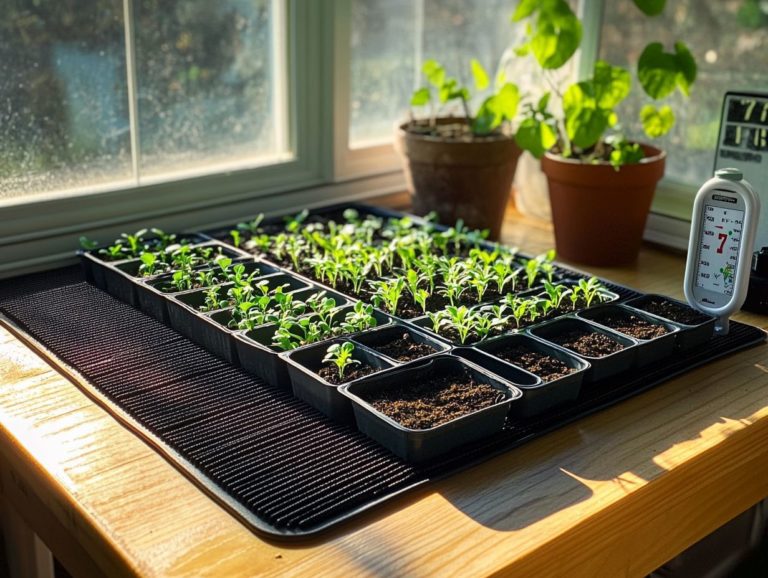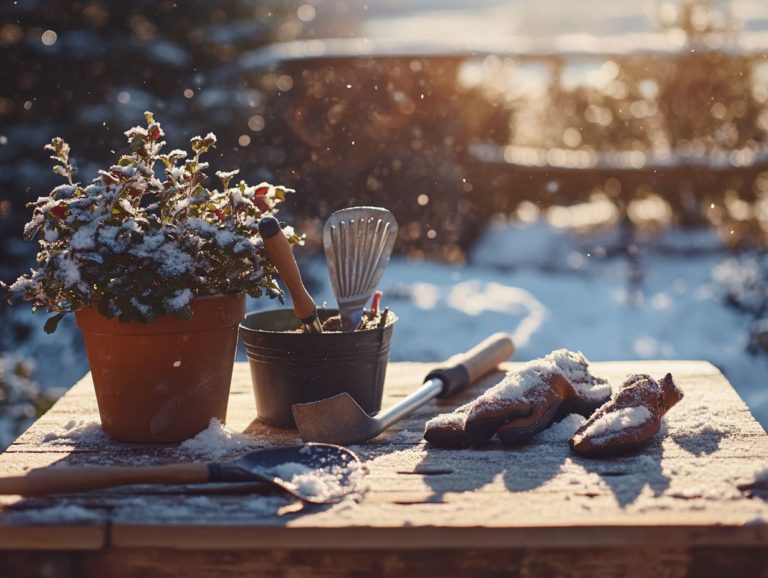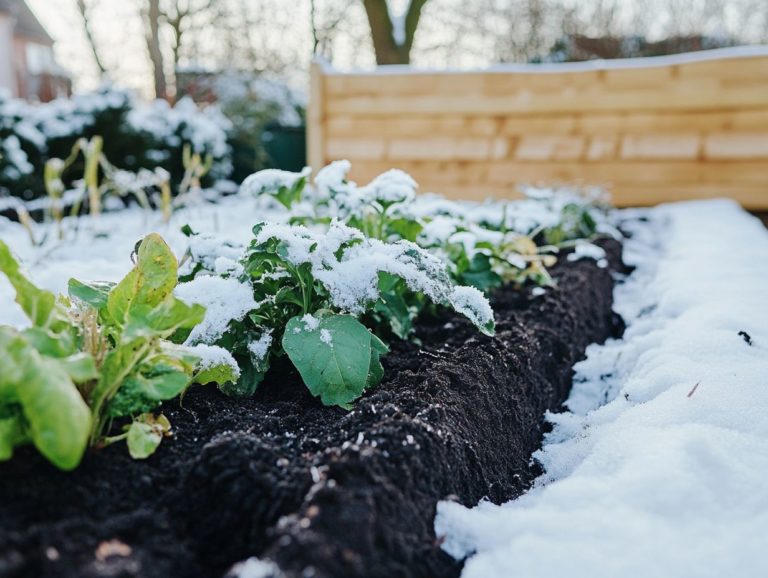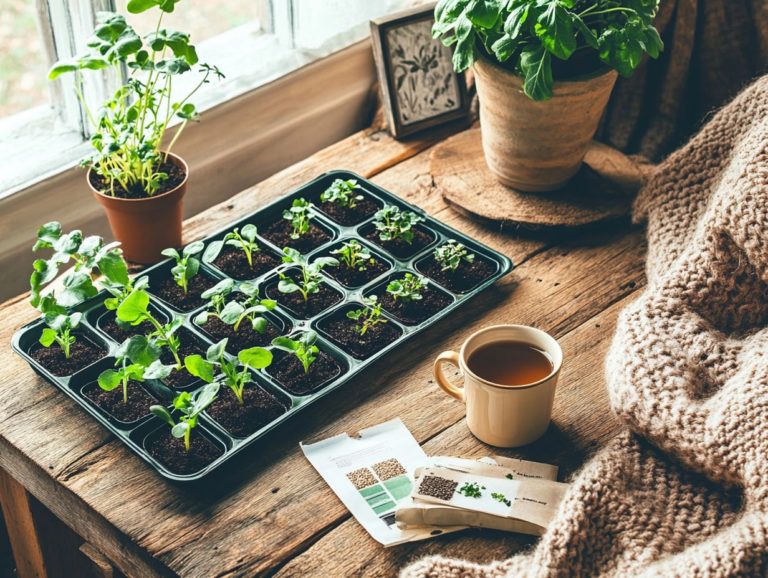Challenges of Winter Gardening and Solutions
Winter gardening presents a unique blend of rewards and challenges. As temperatures drop and daylight wanes, you encounter specific obstacles that demand careful preparation.
This article guides you through essential steps to ensure your success. From selecting cold-resistant plants to safeguarding your garden against harsh elements, we cover it all.
Uncover how to make the most of your winter garden and savor its beauty, even during the coldest months.
Contents
- Key Takeaways:
- The Challenges of Winter Gardening
- Preparing for Winter Gardening
- Choosing the Right Plants
- Protecting Your Garden from the Elements
- Dealing with Pests and Diseases
- Maximizing Your Winter Garden’s Potential
- Frequently Asked Questions
- What are the main challenges of winter gardening?
- How can I protect my plants from the cold weather during winter gardening?
- What can I do to ensure my plants receive enough sunlight during winter gardening?
- What are some common pests and diseases that can affect plants during winter gardening?
- How can I extend my winter gardening season?
- What are some solutions for keeping my soil healthy during winter gardening?
Key Takeaways:
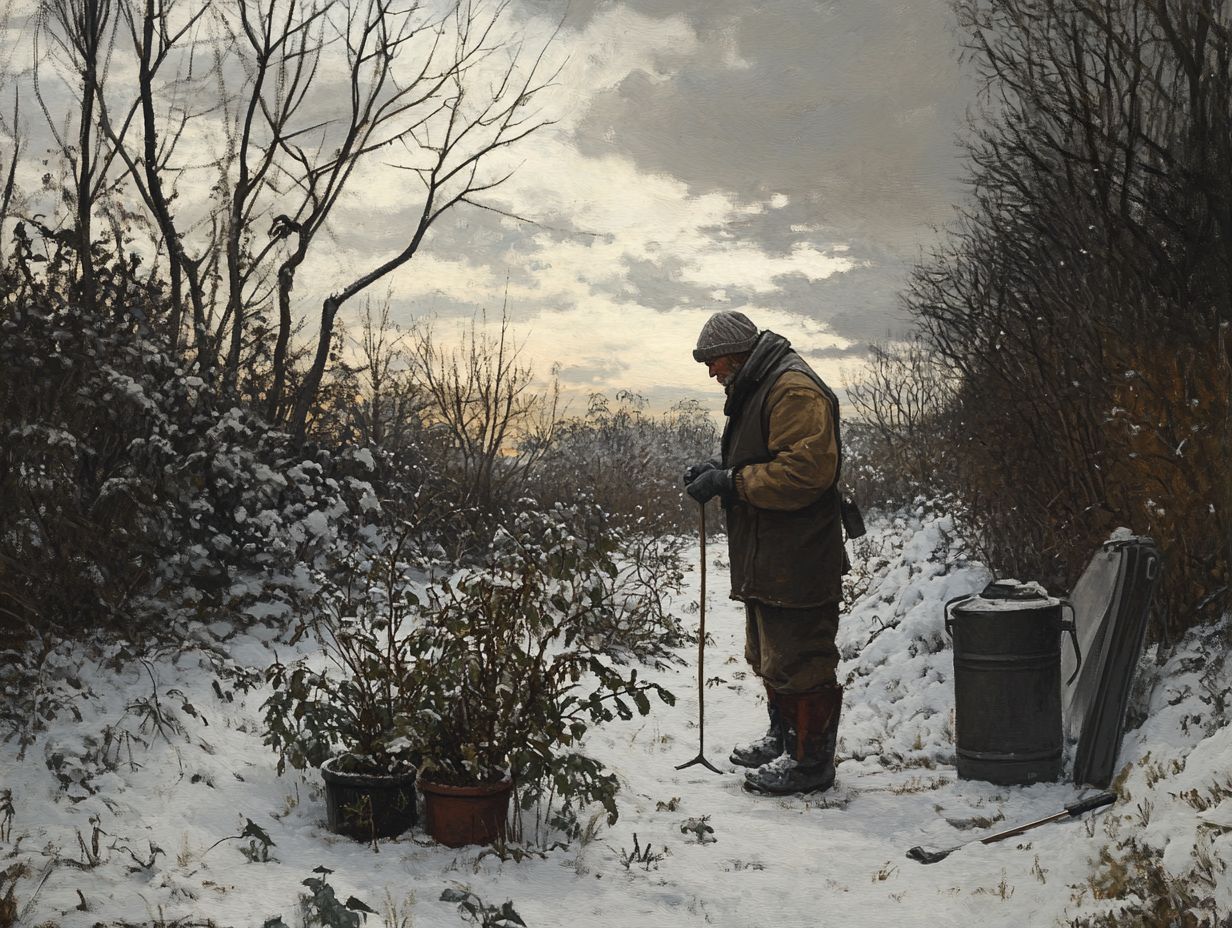
- Winter gardening poses challenges like freezing temperatures and shorter days. With proper preparation and plant selection, it can be successful.
- Choosing cold-resistant plants, protecting them, and addressing pests are essential for a thriving winter garden.
- Maximize your garden s potential by using tips such as succession planting and including evergreens for year-round interest.
The Challenges of Winter Gardening
Winter gardening offers a range of challenges that can deter even the most enthusiastic gardeners. As cold weather sets in, you may face issues like safeguarding crops from frost and navigating the short growing season. Learning about winter gardening challenges and how to overcome them can help you adapt and succeed.
Rick Stone of Our Stoney Acres emphasizes that tackling these top 5 challenges in winter gardening is essential for successful winter vegetable gardening. With the right strategies, vegetables like carrots, kale, and spinach can thrive.
Understanding Unique Obstacles
Recognizing the challenges of winter gardening is vital for managing your crops effectively. The lack of light limits photosynthesis and affects your crops’ vitality, so exploring tips for sustainable winter gardening can make a significant difference.
To thrive in these tough conditions, focus on plant care. Ensuring they receive protection from the cold is essential.
Creating small areas that are warmer, such as positioning plants near south-facing walls or using cold frames, can promote growth and resilience.
Preparing for Winter Gardening
Preparation is key for winter gardening. Taking essential steps will keep your vegetable gardens thriving in the colder months.
Using methods to extend your growing season, like cold frames and mini hoop houses, is crucial to safeguard your crops.
Investing in the right tools will greatly enhance your ability to grow food year-round, even in challenging climates.
Essential Steps for Success
Start your winter gardening journey by establishing a planting calendar based on your regional climate. This helps determine the best times for sowing, transplanting, and harvesting.
Using mulch insulates the soil and conserves moisture, helping plants withstand cold temperatures. Providing proper frost protection, like covering sensitive plants during frigid nights, can make a big difference.
Incorporating hardy plants that return each year will enhance resilience in your winter garden. Using cold frames and hoop houses will help maximize your growth potential during colder months.
Choosing the Right Plants
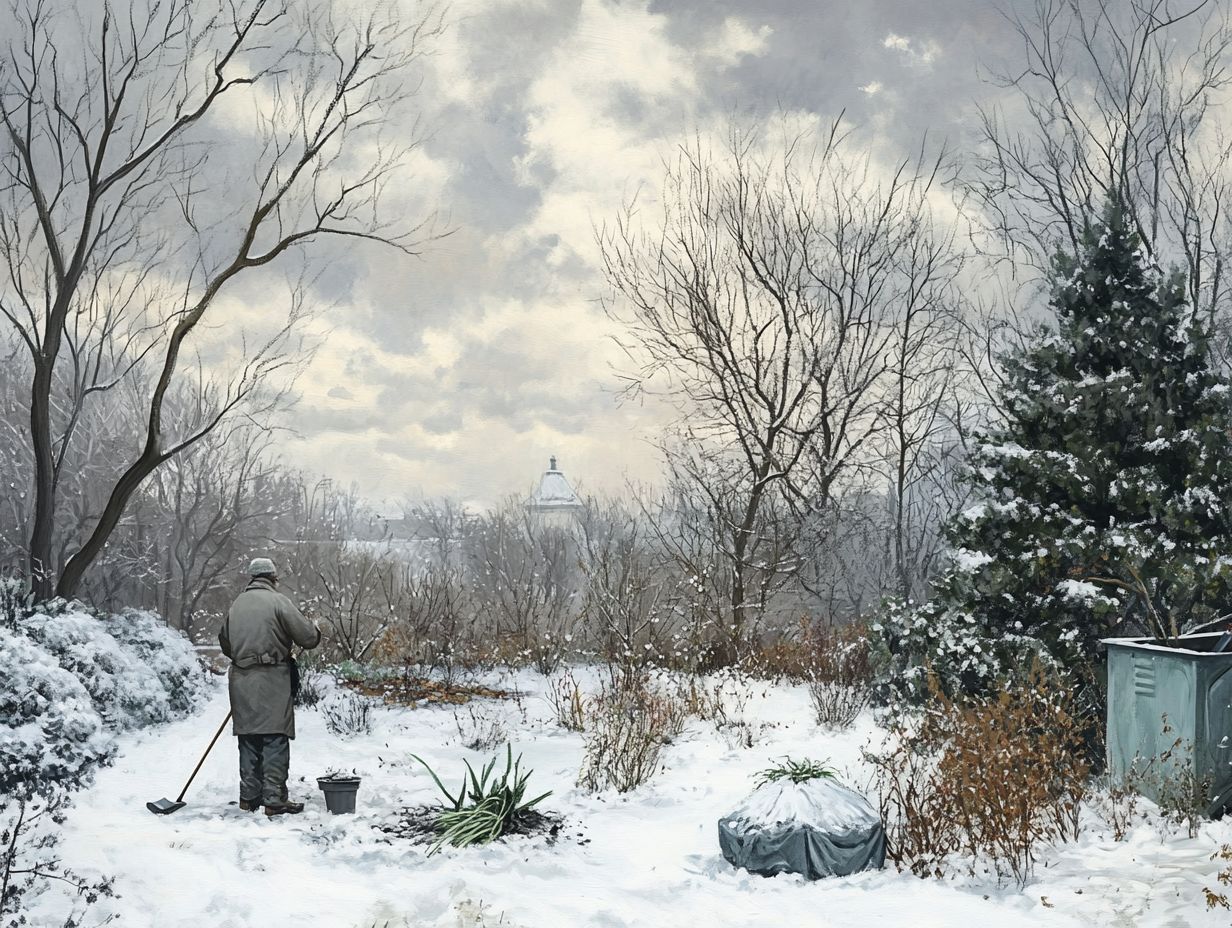
Selecting the right plants for your winter garden is essential for achieving a fruitful harvest, even in the chill of winter. Opt for cold-resistant varieties like hardy vegetables such as kale, spinach, Swiss chard, and Napa cabbage. These plants flourish in cooler temperatures, perfect for your gardening endeavors.
By integrating these winter-friendly options into your plans, you can maximize your yield while also learning how to identify cold-climate gardening challenges to maintain a vibrant and diverse garden throughout the season.
Cold-Resistant and Winter-Friendly Options
Cold-resistant and winter-friendly options can significantly enhance your success. Select robust varieties like Bok choy, which withstand frost and thrive in cooler temperatures, extending your growing season beyond traditional limits.
These hardy vegetables retain their flavor and nutritional value, even in the chill. Incorporating Oyster mushrooms into your winter garden adds diversity to your harvest, providing a rich source of nutrients that elevate your culinary creations!
Choosing a mix of plants and mushrooms ensures a vibrant garden. This diversity allows for a more abundant winter table, making your gardening efforts truly rewarding.
Protecting Your Garden from the Elements
Protecting your garden from the harsh elements is crucial for ensuring the health and vitality of your plants throughout the winter months.
Consider employing effective strategies such as plant covers, including row covers, cold frames, and mini hoop houses, to shield your crops from frost and snow. By implementing these protective measures, you create microclimates small areas with different climates from the surrounding area that nurture healthy plant growth. This enables you to reap a bountiful harvest even amid challenging weather conditions!
Strategies for Keeping Plants Safe and Healthy
Implementing effective strategies to keep your plants safe and healthy in winter gardening is essential. These strategies boost your outdoor plants resilience and keep them healthy during the cold months!
One practical tip for frost protection is to apply a thick layer of mulch around the base of your plants. This acts as an insulating barrier for the roots and helps retain moisture. Establishing a regular care routine like pruning away dead or diseased branches and closely monitoring soil moisture ensures your plants are in optimal shape before temperatures take a nosedive.
It s wise to select appropriate coverings, such as frost cloths or burlaps, to protect your delicate specimens from harsh winds and biting frost. You can create a more favorable environment by taking proactive measures!
Dealing with Pests and Diseases
Addressing pests and diseases in your winter garden demands a proactive strategy to safeguard the health of your plants during the colder months. It’s easy to underestimate the challenges posed by pests, even in winter, so having the right essential tools for winter gardening success is crucial.
However, by embracing organic gardening principles, you can effectively counter these issues. Understanding the challenges of cold-climate gardening, along with consistent plant care and vigilant monitoring for common winter pests, will set the stage for a flourishing winter vegetable garden!
Common Winter Garden Pests and How to Handle Them
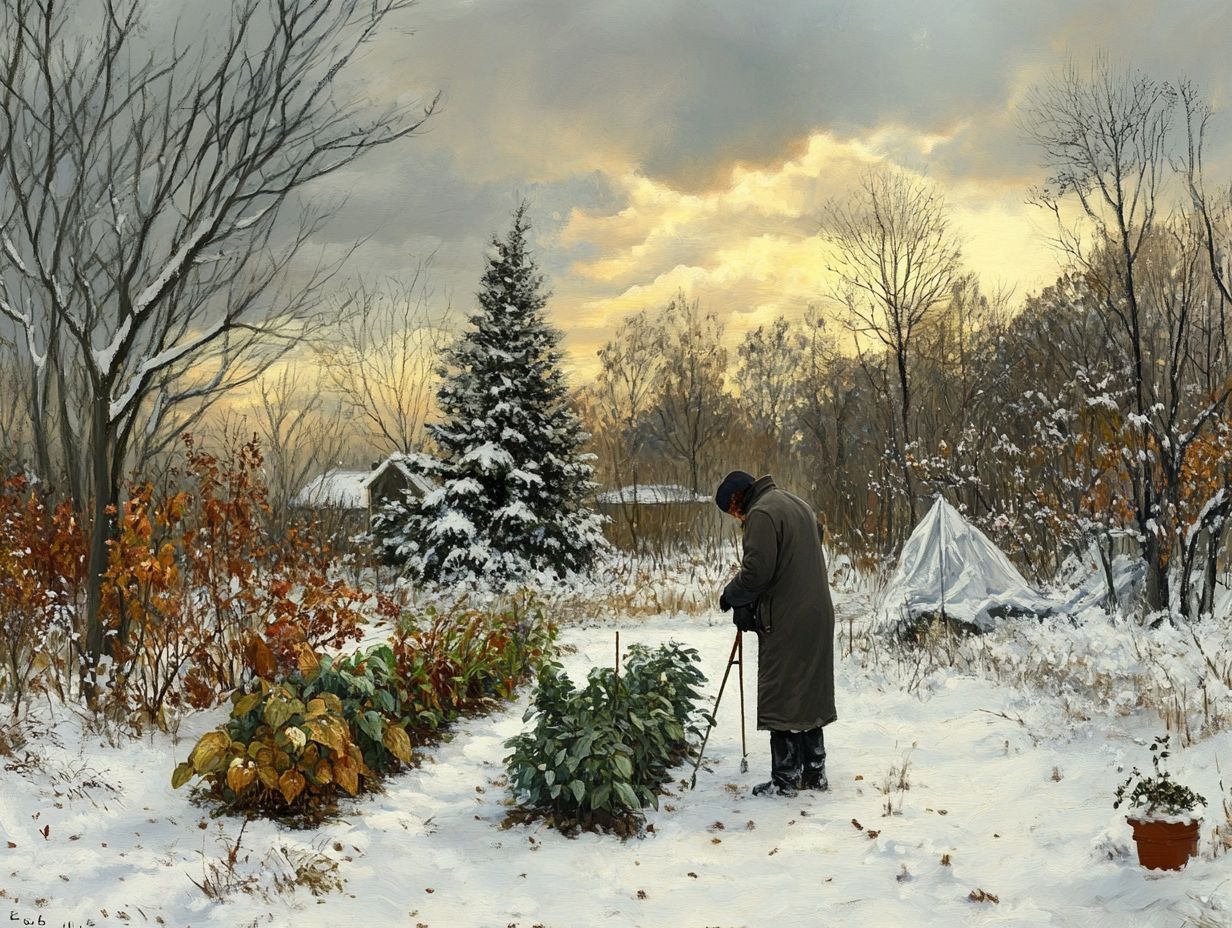
Identifying common winter garden pests and knowing how to manage them is essential for maintaining the health of your winter garden.
Even in colder months, various pests can thrive, including aphids, spider mites, and fungus gnats, often preying on indoor plants that may not be as resilient. Fortunately, organic gardening methods provide effective solutions to tackle these nuisances without resorting to harmful chemicals. For example, introducing beneficial insects like ladybugs and predatory mites can effectively keep aphid populations in check.
Maintaining proper humidity levels and ensuring good airflow can deter mites and gnats. Regularly inspecting your plants for early signs of infestation allows you to take prompt action, ensuring that your winter garden flourishes with minimal disruption to the ecosystem!
Maximizing Your Winter Garden’s Potential
Maximizing the potential of your winter garden requires effective gardening methods and techniques that enhance both yield and enjoyment.
By embracing practices such as careful harvest planning and strategic crop rotation, you can significantly boost the productivity of your vegetable garden during the colder months.
Imagine how your winter garden can bloom with incredible potential with the right care and attention. It can become a truly fulfilling and fruitful journey.
Tips for Maximizing Yield and Enjoyment
Specific tips for enhancing yield and enjoyment in your winter garden can elevate your gardening experience, making it both productive and rewarding.
For instance, effective harvest planning ensures that your crops reach their peak flavor just in time for cozy cold-weather meals. This allows you to whip up delicious seasonal recipes that warm the soul.
Selecting the right crops, like hearty greens and root vegetables, can transform your winter garden into a thriving oasis, providing fresh produce even amidst the chill.
Incorporating organic gardening practices not only promotes the health of your soil but also enhances sustainability. This results in healthier plants and a reduced reliance on chemical inputs.
When you combine these strategies, your winter gardening journey becomes more than just fruitful; it turns into an engaging experience filled with anticipation for the bountiful harvest that awaits.
Frequently Asked Questions
What are the main challenges of winter gardening?
The main challenges of winter gardening include shorter daylight hours, colder temperatures, and harsh weather conditions such as frost and snow. For more insight on this topic, check out the top 5 challenges of winter gardening, as these factors can make it difficult for plants to grow and thrive.
How can I protect my plants from the cold weather during winter gardening?
There are several solutions to protecting your plants from the cold weather during winter gardening. You can use techniques such as mulching, using cold frames or cloches, and providing shelter from strong winds. For more detailed strategies, consider navigating seasonal changes in winter gardening. Additionally, choosing cold-hardy plants and planting them in well-draining soil can also help.
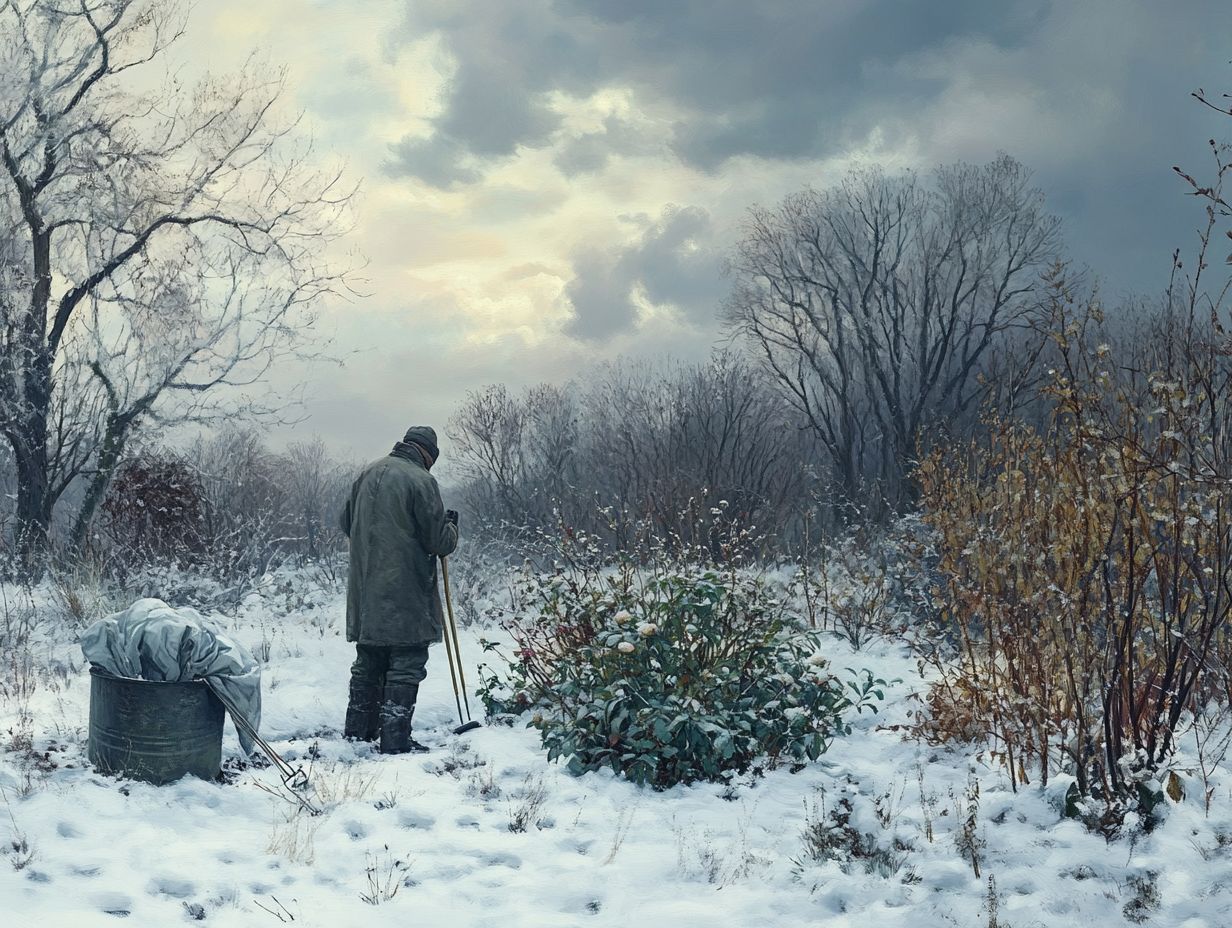
What can I do to ensure my plants receive enough sunlight during winter gardening?
Due to shorter daylight hours in winter, plants may not receive enough sunlight for optimal growth. To solve this challenge, you can use reflective mulch or place your plants in areas that receive maximum sunlight during the day. You can also consider using artificial lights to supplement natural light.
What are some common pests and diseases that can affect plants during winter gardening?
Common pests and diseases that can affect plants during winter gardening include aphids, powdery mildew, and root rot. These can be prevented by regularly inspecting your plants, practicing good hygiene, and using organic pest control methods.
How can I extend my winter gardening season?
To extend your winter gardening season, you can use techniques such as crop rotation, succession planting, and protective coverings like row covers or hoop houses. You can also choose to grow cold-tolerant crops that can withstand low temperatures.
What are some solutions for keeping my soil healthy during winter gardening?
During winter, it is important to keep your soil healthy to ensure your plants receive the necessary nutrients. Some solutions include adding compost or organic fertilizer, using cover crops to prevent soil erosion, and avoiding over-watering or using heavy machinery on wet soil.
Start your winter garden today for an abundant yield!

